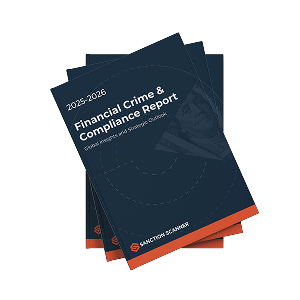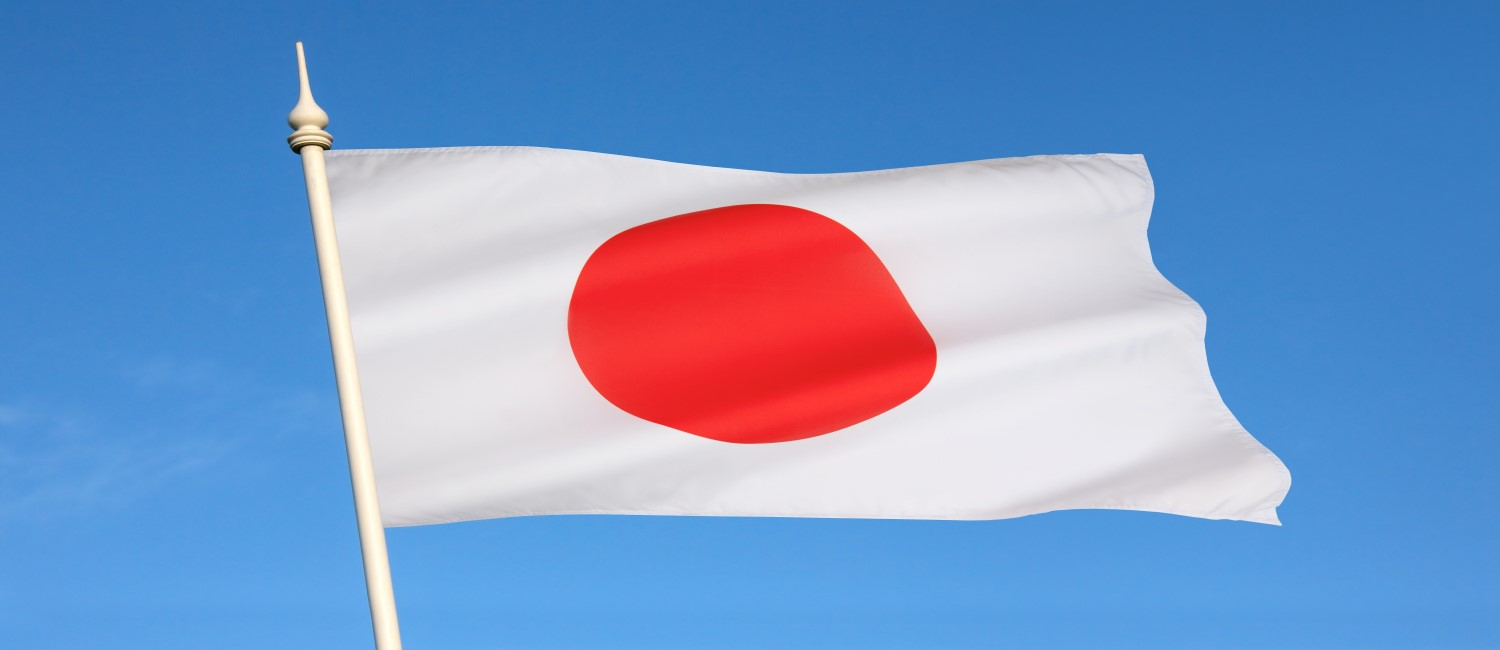The attempts of criminals in concealing and legitimizing illicit gains don’t appear to be coming to a halt anytime soon, and this is exactly what makes anti-money laundering (AML) practices important for safeguarding financial systems. The United States’ development of robust systems and regulations to combat money laundering helped the country in addressing both unique domestic concerns and aligning with global standards. We will provide a detailed exploration of the framework, regulations, compliance requirements, and active sectors of AML in the U.S..
What Is Anti-Money Laundering (AML) in the U.S.?
The definition of anti-money laundering encompasses the laws, regulations, and proce-dures implemented to prevent criminals from disguising illegally obtained funds as legitimate income. Within the U.S., AML is deeply intertwined with the country’s national securi-ty and financial integrity, through the landmark legislations like the Bank Secrecy Act (BSA) and the USA PATRIOT Act. Together, these regulations lay the foundation for a comprehensive AML infrastructure, mandating financial institutions to detect, prevent, and report illicit activities.
Which U.S. Laws Govern Anti-Money Laundering Efforts?
The United States enforces several laws to regulate AML activities, bolstered by amendments that evolve alongside sophisticated financial crimes. Here are the most significant ones.
What Is the Bank Secrecy Act (BSA)?
In 1970, the Bank Secrecy Act (BSA) was enacted, and it still forms the backbone of AML efforts in the U.S. up to this day. Pursuant to this law, financial institutions must keep and file reports that may be useful in detecting money laundering activities. These are classified as Currency Transaction Reports (for transactions that exceed $10,000) and Suspicious Activity Reports (for suspicious or unusual transactions).
How Did the USA PATRIOT Act Expand AML Powers?
The expansion of the BSA coincided with the aftermath of 9/11 and took place through the USA PATRIOT Act (2001), which reinforced AML by imposing the requirement of enhanced Customer Due Diligence (CDD) efforts for verification of identities, risk assessments, col-laborations between financial institutions and law enforcement and, expanded focus on international money laundering schemes and terrorist financing.
What Are the Key Provisions of the Anti-Money Laundering Act of 2020?
The importance of the Anti-Money Laundering Act of 2020 (AMLA 2020) within the National Defense Authorization Act (NDAA) in the Fiscal Year 2021 lies in the fact that the Beneficial Ownership Registry was introduced by it. It presents rather high penalties for AML non-compliance and the protection of individuals who report against it.
Who Regulates AML Compliance in the United States?
There are multiple regulators that work collectively to enforce AML compliance, and each serves a specific role.
What Is FinCEN and What Does It Do?
The Financial Crimes Enforcement Network (FinCEN) is an agency of the U.S. Treasury that oversees AML compliance nationwide. It issues regulations, gathers intelligence, enforces penalties for BSA violations, and maintains the Beneficial Ownership Registry.
How Do the OCC, SEC, and FDIC Enforce AML Rules?
The Office of the Comptroller of the Currency (OCC) supervises national banks and federal savings associations to ensure compliance with AML laws, Securities and Exchange Com-mission (SEC) enforces AML requirements within securities firms and brokers and, Federal Deposit Insurance Corporation (FDIC) monitors insured financial institutions to ensure AML programs are effective.
What Is the Role of the Department of Justice (DOJ) in AML?
The scope of the Department of Justice’s (DOJ) responsibility includes the conduct of prosecutions against money laundering offenses and overseeing investigations into financial crimes in collaboration with regulatory bodies and law enforcement.
Key Takeaway
Other necessary AML/CFT regulations in the USA:
- Money Laundering Control Act (1986)
- Money Laundering Suppression Act (1994)
- Money Laundering and Financial Crimes Strategy Act (1998)
- Suppression of the Financing of Terrorism Convention Implementation Act (2002)
- Intelligence Reform and Terrorism Prevention Act (2004)
What Are the AML Compliance Requirements for U.S. Businesses?
AML compliance requirements extend across various industries.
What Is a Customer Identification Program (CIP)?
CIP mandates financial institutions to verify the identity of their customers before allowing them to open accounts, which includes collecting identifying information like name, address, date of birth, and taxpayer identification number (TIN).
How Does Customer Due Diligence (CDD) Work?
CDD involves the assessment of customers’ risk profiles based on transaction patterns, source of funds, and business activities, but these baselines should be adjusted by the institutions.
When Is Enhanced Due Diligence (EDD) Required?
EDD concerns high-risk customers. These customers can be exemplified as politically exposed persons or entities from high-risk jurisdictions. Enhanced Due Diligence examines ownership structures, source of wealth, and ongoing transaction monitoring of these people.
How Often Should Businesses Conduct Ongoing Monitoring?
This is a matter that demands continued vigilance, so it is not something that businesses can check off and move on. Ongoing monitoring must be implemented to detect unusual activities and adjust risk assessments as necessary.
Which Sectors Must Comply with AML Regulations in the U.S.?
AML regulations extend to a wide range of industries. Some of the most impacted sectors include:
Financial Institutions
Banks, credit unions, and other financial institutions are among the primary sectors required to comply with AML regulations due to their central role in monitoring transactions, maintaining detailed records, and reporting suspicious activities to regulatory bodies, such as the Financial Crimes Enforcement Network (FinCEN).
Money Services Businesses (MSBs)
AML laws heavily regulate MSBs and require them to implement robust compliance programs in order to mitigate the risk of money laundering and terrorist financing.
Securities and Investment Firms
Broker-dealers, investment advisors, and other entities involved in securities trading must follow AML compliance protocols. Again, this encompasses the identification and reporting of potential illegal financial activities like market manipulation and insider trading.
Insurance Companies
Insurance companies offer many things, but if these include products with a cash value, they are required to implement AML practices through monitoring premiums and payouts for unusual patterns.
Real Estate Entities
The link between vulnerability to illicit activities and real estate developers, brokers, and title insurers is an indisputable truth. Thus, it is mandatory for them to closely monitor high-value transactions, particularly ones that involve cash or foreign buyers.
Casinos and Gaming Establishments
There are innumerable amounts of cash transactions in these places, and so, it is only expected that they need to comply with AML regulations.
Precious Metals and Jewelry Dealers
This sector tends to attract individuals with malicious intent due to the ease of converting these assets into untraceable currency, which requires them to be in full compliance with AML regulations.
Cryptocurrency and Virtual Asset Providers
Their decentralized nature makes them ideal targets; thus, transactions must be monitored, and suspicious activities must be equally reported to mitigate risks concerning the decentralization.
Legal and Accounting Professionals
Law firms and accountants must implement AML protocols. Especially when managing client funds, real estate, or trust arrangements.
Non-Profit Organizations (NPOs)
Certain NPOs must enhance transparency and adopt financial monitoring practices due to the risk of misuse by criminal networks.
Though they don’t attract the most attention, their misuse is nonetheless one of the preferred targets of criminal networks. So, it would be really wise for them to enhance transparency and adopt financial monitoring practices.
What Industries Are Considered High-Risk for Money Laundering In the US?
Let’s start with the financial industry when looking at these sectors. Businesses like banks and credit unions are very susceptible to money laundering, as we can see in the data published by the United Nations, which indicates that the majority of the laundered money flows through financial services.
The real estate industry provides a common avenue because it offers a golden opportunity for criminals. Wondering how this happens? It is simple. Criminals first use illicit funds to purchase properties, and they later sell or rent them to generate clean income. The gravity of the matter is further underscored by a report from the FATF (Financial Action Task Force), which indicates real estate accounting for 30% of global money laundering cases.
The gambling sector poses a high risk because customers can exchange large sums of cash for chips or other forms of currency to discreetly integrate illicit money into the financial system.
The art market is worth over $65 billion but is largely unregulated. Of course, this doesn’t escape the attention of offenders, who use high-value goods to transfer and launder money due to the difficulty in determining their true value.
The decentralized and relatively anonymous nature of cryptocurrencies has made them an attractive tool for laundering money, as can be seen in the data of blockchain analysis firms that indicate about $23.8 billion in cryptocurrency was linked to illicit activity in 2022.
We must also mention cash-intensive businesses like convenience stores and car washes due to the fact that they handle large volumes of cash. Criminals mix the illicit funds with legitimate cash revenues. The IMF backs this up by stating that 20-25% of global money laundering involves cash-intensive businesses.
What Are the Red Flags for Money Laundering in the U.S.?
It is important to recognize red flags to detect and prevent money laundering activities. Financial institutions, businesses, and individuals alike must stay alert to suspicious behaviors that could indicate illicit activities. Some common indicators are structuring/smurfing (breaking down large transactions into smaller amounts to avoid reporting thresholds), unusual wire transfers, shell companies, and transactions with High-Risk jurisdictions.
What Is a Suspicious Activity Report (SAR) and When Must It Be Filed?
It is a key tool for the prevention of financial crimes such as money laundering, fraud, and terrorist financing that businesses must file with the Financial Crimes Enforcement Network (FinCEN) to flag transactions or behavior that seem unusual and may warrant further investigation.
Additional Details:
- Who Is Required to File SARs? Financial institutions, including banks, credit unions, money services businesses, and cryptocurrency exchanges, must file SARs, but some non-financial businesses, such as casinos, may also have SAR filing obligations.
- What Is the Timeline for Filing a SAR? Normally, institutions must file SAR within 30 calendar days, but if they need more information to verify the activity, the timeline may extend up to 60 days.
- ·How Are SARs Submitted to FinCEN? SARs are electronically filed through FinCEN’s BSA E-Filing System to ensure accurate reporting, and then the law enforcement and regulatory agencies investigate and address potential financial crimes through the filed information.
What Are the Penalties for Failing to Comply with AML Laws in the U.S.?
Regulatory bodies, such as the Financial Crimes Enforcement Network (FinCEN), the Office of the Comptroller of the Currency (OCC), and the Department of Justice (DOJ), may impose severe penalties upon failure to comply.
The Bank Secrecy Act’s (BSA) penalties may go up to $100,000, but if the transaction exceeds this amount, the fine goes as high as the value of the transaction, and this is not the only penalty because it also imposes on institutions to forfeit assets related to illicit activity.
Deliberate violation of AML laws can result in up to 20 years in prison, and in addition, non-compliance can cause reputational harm, loss of customer trust, deteriorated potential partnerships, and decrease the institution's market value.
We also have to mention the civil fines, which may also be imposed for negligence or failure to establish adequate AML compliance programs.
How Can Businesses in the U.S. Improve Their AML Programs?
To stay in step with the rest of the world, we can not overstate the importance of utilizing cutting-edge tools like AI and machine learning in order to analyze vast amounts of transactional data in real-time. If you have executed these properly, your business operations will certainly become easier thanks to the features like identification of patterns and anomalies, automated detection, reduced false positives, and faster response times.
- Also, employees must be well-equipped to recognize red flags, and this could be done through hands-on workshops, case studies, and compliance simulations.
- You should consider developing a strong framework of internal controls that includes regular audits, risk assessments, feedback loops, and clear reporting procedures, so that your organization can evaluate AML measures as well as ensure they are operating effectively.
- Business owners should also keep the importance of building a collaborative relationship with regulatory authorities in mind because it can smooth the compliance process during inspections and audits.
- Also, be mindful to take a proactive approach that uses a combination of all these strategies with consistent and thorough monitoring by developing a system that tracks transactions, customer activities, and compliance metrics. Doing this could help your business to swiftly respond to potential threats.
Major Money Laundering Cases in the U.S. (2000–2025)
| Year | Case Name | Entity Involved | Penalty/Fine | Key Violations | Impact on AML Landscape |
| 2012 | HSBC Cartel Laundering | HSBC Holdings plc | $1.9 billion | Facilitated laundering for Mexican drug cartels; failed CDD & SAR practices | Triggered global AML scrutiny & DPA use |
| 2017 | Deutsche Bank (Russia) | Deutsche Bank | $630 million | Mirror trading scheme via U.S. and U.K. branches |
Emphasized the risk of cross-border layering |
| 2018 | Rabobank Case | Rabobank N.A. | $368 million | Knowingly processed suspicious cash from Mexico; SAR failures | Highlighted the bank's obligation under BSA |
| 2020 | Goldman Sachs 1MDB | Goldman Sachs | $2.9 billion (global) | Facilitated fund misappropriation tied to Malaysia's 1MDB sovereign fund | Raised AML flags in investment banking |
| 2022 | Danske Bank Estonian Unit | Danske Bank (U.S. role) | $2.06 billion | Laundered ~$200B through non-resident accounts, U.S. correspondent banks involved | Pushed the global focus on beneficial ownership |
| 2023 | Bitzlato Case | Bitzlato (Crypto) | Platform shutdown | Alleged facilitation of ransomware payments and P2P anonymous transactions | Reinforced AML rules for crypto exchanges |
| 2024 | Signature Bank Crypto Risks | Signature Bank | Ongoing investigations | Alleged failure to detect suspicious crypto transactions |
Sparked a push for tighter VASP oversight |
How Does the U.S. Cooperate with Global AML Initiatives?
The United States plays a key role in supporting international efforts to combat money laundering and financial crimes. Here’s how:
What Is the U.S. Role in the FATF?
The U.S. is a founding member of the Financial Action Task Force (FATF), and it sets global standards for combating money laundering, terrorist financing, and other illicit financial activities through the formation of policies and ensuring their implementation is conducted properly worldwide.
Does the U.S. Share AML Data Internationally?
The U.S. has a wide range of collaborations with international partners. Egmont Group is a fine example of these collaborations. What drives them to do this is to track illicit financial flows across borders to further help the strengthening of global enforcement efforts.
What Is the Effect of Global Sanctions Lists?
The United States maintains and enforces sanctions lists with the support of agencies like the Office of Foreign Assets Control (OFAC). The influence of these lists reaches far into international financial systems regarding the restriction of access for individuals and entities linked to money laundering, terrorism, or other criminal activities.
What Are the Current AML Trends in the United States (2025)?
Today, financial institutions leverage artificial intelligence more and more. AI is generally used to enhance transaction monitoring systems due to its capabilities in the detection of suspicious patterns and potential money laundering activities more efficiently than traditional methods.
Cryptocurrency adoption is growing, and this leads regulators to crack down on compliance with the implementation of new rules that focus on ensuring transparency in crypto transactions and the prevention of illicit activities.
In order to combat shell companies that are used for hiding illicit funds and ensure greater accountability in corporate structure, the implementation of stricter corporate transparency laws requires companies to disclose their beneficial owners.
FAQ's Blog Post
AML in the USA refers to laws and regulations designed to prevent money laundering and financial crimes.
The Financial Crimes Enforcement Network (FinCEN) is the primary agency overseeing AML enforcement in the U.S.
Key AML laws include the Bank Secrecy Act (BSA), USA PATRIOT Act, and the Anti-Money Laundering Act of 2020.
They must implement a risk-based AML program, perform customer due diligence (CDD), and report suspicious activities.
Banks, credit unions, money service businesses, casinos, and some fintechs are required to follow U.S. AML rules.
A SAR is a report filed with FinCEN when a transaction appears to involve money laundering or other illegal activity.
Yes, virtual asset service providers must register with FinCEN and comply with AML/CFT obligations.
Violations can lead to hefty fines, license revocation, and even criminal charges for institutions or individuals.






